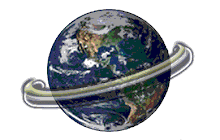the small-diameter column of violently rotating air developed within a convective cloud and in contact with the ground. Tornadoes occur most often in association with thunderstorms during the spring and summer in the mid-latitudes of both the Northern and Southern Hemispheres. These whirling atmospheric vortices can generate the strongest winds known on Earth: wind speeds in the range of 500 km (300 miles) per hour have been measured in extreme events. When winds of this magnitude strike a populated area, they can cause fantastic destruction and great loss of life, mainly through injuries from flying debris and collapsing structures. Most tornadoes, however, are comparatively weak events that occur in sparsely populated areas and cause minor damage.
Calculating which country has the most tornadoes per year depends on how this measurement is defined. The United Kingdom has the most tornadoes per land size, most of them weak. On average, about 33 tornadoes are reported annually there. In absolute numbers, the United States has the most tornadoes by far (more than 1,000 per year have been reported every year since 1990). It also has the most violent tornadoes (about 10 to 20 per year). Tornadoes of this intensity are very infrequent outside of the United States. Canada reports the second largest number of tornadoes (about 80 to 100 annually). Russia may have many tornadoes, but reports are not available to quantify their occurrence. About 20 tornadoes are reported in Australia each year, though the actual number is likely much higher. Many storms occur in uninhabited areas, and so any tornadoes that they produce are undocumented.
Records of tornado occurrences are fragmentary for many areas, making estimates of global tornado frequency difficult. Insurance records show that tornadoes have caused significant losses in Europe, India, Japan, South Africa, and Australia. Rare but deadly tornadoes have occurred in many other countries, including Bangladesh, China, and Argentina. There are few tornado reports from either the Arctic or the equatorial tropics.
In the United Kingdom almost all reported tornadoes are associated with vigorous convection occurring in advance of and along a cold frontal boundary. Large temperature differences are associated with early winter cold fronts that move rapidly across the country from the north and west, at times spawning widespread outbreaks of small tornadoes. For example, the passage of a very strong frontal boundary across the United Kingdom on November 23, 1981, produced 105 documented tornadoes. Similar phenomena occur in other European countries such as France and Belgium.
Most Southern Hemisphere tornadoes occur in Australia. Many reports come from New South Wales, where there were 173 reported tornadoes from 1901 to 1966. In addition, South Africa and Argentina both reported 191 tornadoes from 1930 to 1979. Because tornado formation is closely tied to the speed and directional shear of the wind with height, tornadoes in the Southern Hemisphere almost exclusively rotate clockwise, opposite to the rotation of their Northern Hemisphere counterparts.
Subscribe to:
Post Comments (Atom)

No comments:
Post a Comment